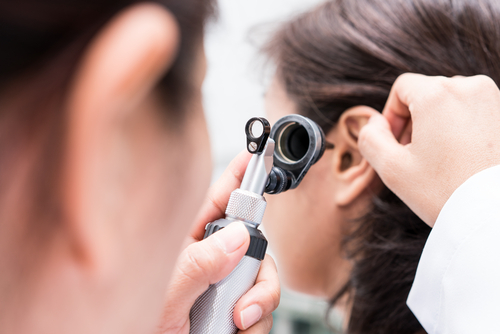Study Helps Understand Hearing Loss in Patient with X-linked Alport Syndrome

Detailed analysis of inner ear structures in a patient diagnosed with X-linked inherited Alport syndrome reveals particular cochlea features that may contribute to hearing loss among these patients, researchers suggest.
The findings of the case report were described in a study published in the journal Laryngoscope Investigative Otolaryngology, titled “Temporal Bone Histopathology of X‐linked Inherited Alport Syndrome.”
About 80% of cases of Alport syndrome are linked to defects in the COL4A5 gene located on the X chromosome, so-called X-linked Alport syndrome (XLAS).
Patients are often diagnosed during childhood due to impaired kidney activity and increased levels of red blood cells in urine. Progressive hearing loss also affects about 80% of boys with Alport syndrome, as COL4A5 is an important component to sustain the integrity of the organ of Corti (part of the cochlea) — a structure of the inner ear that transforms sounds into electrical signals that are sent to the brain.
Researchers evaluated the impact of XLAS in the tissues of the cochlea. They collected inner ear tissues of a patient with confirmed XLAS after death, and examined them through a microscope.
The patient had been diagnosed during childhood, and by age 28 had developed end-stage renal disease and became dependent on hemodialysis to assist the failing kidneys. At age 33 he had a kidney transplant, but his body rejected the new organ.
By age 43 he developed sensorineural hearing loss (SNHL), requiring him to use hearing aids in both ears. He also wore eyeglasses to overcome a change in the eye’s lens (lenticonus), also caused by the disease.
At his 70s, he developed cardiac problems, with persistent atrial fibrillation (rapid and irregular heartbeat), coronary artery disease, and aortic stenosis (a narrowing of the aortic valve opening, which impairs blood flow).
The patient died of myocardial infarction and aspiration pneumonia at age 71.
Evaluation of his inner ear structures after death revealed that he had experienced severe loss of all rows of hair cells in the cochlea, which are essential for detecting sound waves, and some inner cell layers were thinner. He also had about 20% to 45% loss of sensory nerve cells compared to the numbers found in healthy controls.
The researchers also found that the integrity of the cochlea structures was compromised. The organ of Corti was to some extent separated from its surrounding structures, with some of the created spaces being filled with cells.
“This separation is thought to be the result of a structurally defective basal membrane that fails to provide adequate adhesive support between the basilar membrane and the organ of Corti,” the researchers said.
The team believes that this structural defect may contribute to impaired cochlear mechanisms and the development of SNHL in Alport syndrome patients.







Leave a comment
Fill in the required fields to post. Your email address will not be published.